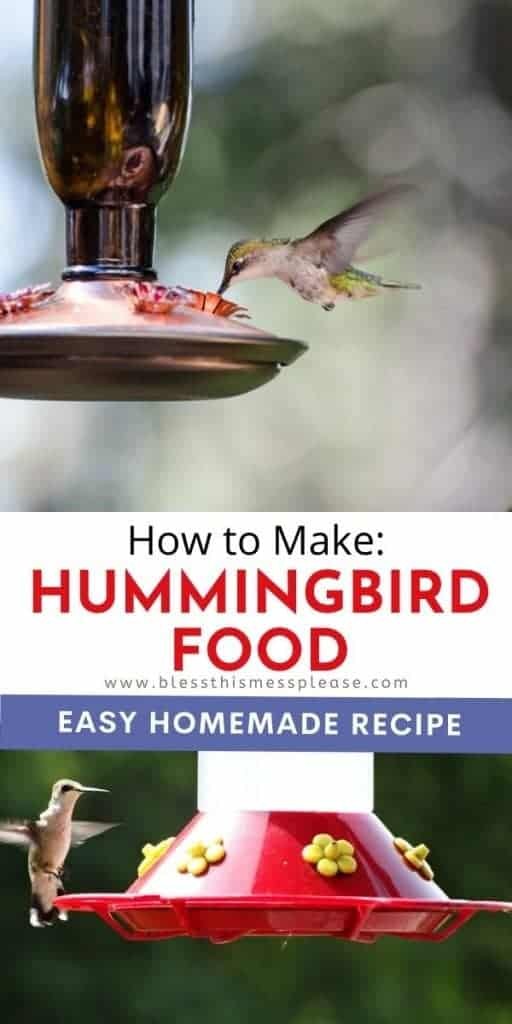Attracting hummingbirds to your garden is easier than you think! With a simple homemade nectar recipe, you can provide these fascinating creatures with the energy they need to thrive. This guide will walk you through everything you need to know about How To Make Food For Hummingbirds, ensuring a healthy and vibrant habitat for these delightful visitors.
Why Homemade Hummingbird Food is Best
While commercially prepared hummingbird food is available, making your own offers several advantages. First, it’s incredibly simple and cost-effective. You likely already have the necessary ingredients in your pantry. Second, you control what goes into the mixture, avoiding potentially harmful dyes, preservatives, and artificial sweeteners found in store-bought options. Providing a natural and healthy food source is crucial for the well-being of these delicate birds.
The Perfect Hummingbird Food Recipe: A Simple Ratio
The key to making hummingbird food is understanding the correct sugar-to-water ratio. Here’s the golden rule:
4 parts water to 1 part granulated white sugar
This mimics the natural nectar found in flowers, providing hummingbirds with the energy they need.
Ingredients You’ll Need:
- 4 cups of water (tap water is fine)
- 1 cup of granulated white sugar (avoid powdered sugar, brown sugar, honey, or artificial sweeteners)
Step-by-Step Instructions:
- Boil the Water: Bring the water to a rolling boil in a clean saucepan. Boiling helps to remove impurities and ensures the sugar dissolves completely.
- Dissolve the Sugar: Remove the water from the heat and stir in the granulated sugar until it is fully dissolved. Continue stirring until the mixture is clear.
- Cool Completely: Allow the sugar water mixture to cool completely before filling your hummingbird feeder. This is important to prevent burns and ensure the food is safe for the birds.
- Fill Your Feeder: Pour the cooled nectar into a clean hummingbird feeder.
Important Considerations for Hummingbird Food Safety
- Never Use Red Dye: Despite the common misconception that red dye attracts hummingbirds, it is potentially harmful to their health. Instead, choose a feeder with red components to attract them naturally.
- Use Only White Sugar: Avoid using honey, brown sugar, powdered sugar, or artificial sweeteners. These can be difficult for hummingbirds to digest or even toxic. Granulated white sugar is the closest to the natural sucrose found in flower nectar.
- Regular Cleaning is Crucial: Hummingbird feeders can quickly become breeding grounds for mold and bacteria. Clean your feeder every 2-3 days, especially during warm weather.
Cleaning Your Hummingbird Feeder: A Step-by-Step Guide
Regular cleaning is essential to prevent the growth of harmful mold and bacteria that can sicken hummingbirds.
- Disassemble the Feeder: Take apart all the components of your hummingbird feeder.
- Rinse with Hot Water: Rinse each part thoroughly with hot water. Avoid using soap, as residue can deter hummingbirds.
- Scrub with a Brush: Use a small brush to scrub any hard-to-reach areas, such as feeding ports.
- Disinfect (Optional): For a deeper clean, soak the feeder parts in a solution of 1 part white vinegar to 4 parts water for about an hour. Alternatively, you can use a mild bleach solution (1 part bleach to 9 parts water), but rinse thoroughly afterward to remove all traces of bleach.
- Rinse Again: Rinse all parts thoroughly with clean water to remove any remaining cleaning solution.
- Dry and Reassemble: Allow all the parts to air dry completely before reassembling the feeder and filling it with fresh nectar.
Tips for Attracting More Hummingbirds
- Location, Location, Location: Place your feeder in a partially shaded area, away from direct sunlight, to prevent the nectar from spoiling quickly. It’s also best to keep it away from high-traffic areas or potential predators.
- Plant Hummingbird-Friendly Flowers: Supplement your feeder with native flowering plants that attract hummingbirds, such as bee balm, salvia, and trumpet vine.
- Be Patient: It may take a few days or weeks for hummingbirds to discover your feeder. Be patient and keep the feeder clean and full.
- Consider Multiple Feeders: If you have a lot of hummingbird activity, consider putting up multiple feeders to reduce competition and ensure all the birds have access to food.
When to Put Out Your Hummingbird Feeders
The timing for putting out hummingbird feeders depends on your location. As a general rule:
- Southern States: February through November
- Mid-Country: April through October
- Northern States: Early May through September
A good indicator is to put out your feeders a week or two before the typical arrival time of hummingbirds in your area.
Storing Homemade Hummingbird Food
You can store leftover hummingbird food in the refrigerator for up to two weeks. Be sure to discard any mixture that shows signs of mold or cloudiness.
10 Amazing Hummingbird Facts
- Hummingbirds can fly backwards!
- Their wings beat between 50-80 times per second.
- Hummingbirds have no sense of smell.
- They consume half their weight in sugar daily.
- Hummingbirds have the smallest eggs of all birds.
- They can fly up to 30 miles per hour.
- Their heart rate can reach 1,200 beats per minute.
- Hummingbirds remember every flower and feeder they’ve visited.
- They are only found in the Americas.
- The average lifespan of a hummingbird is 3-5 years.
By following these tips and understanding how to make food for hummingbirds, you can create a welcoming environment for these amazing creatures and enjoy their beauty in your own backyard.
